Table of Contents
The Epic Story of Ferrari
Have you ever dreamed of driving a Ferrari? These cars are not like any other. They are fast, loud, and beautiful. They make people feel excited and amazed. Ferrari is a famous company from Italy that makes some of the best cars in the world. But Ferrari is not just about cars. It is also about history. Ferrari has a long and interesting story, full of success, sadness, competition, and change.
Beginning

Ferrari’s story begins in 1929 when Enzo Ferrari founded Scuderia Ferrari to sponsor amateur drivers. After years of running Alfa Romeo’s racing team, Ferrari decided to start producing his own cars in 1947. The first vehicle to bear his name – the 125 S – marked the birth of Ferrari as we know it today.
The following table summarizes key road and racing models from Ferrari’s early era:
| Year | Model | Significance |
|---|---|---|
| 1947 | 125 S | First Ferrari automobile |
| 1948 | 166 Spyder Corsa | Ferrari’s first racing victory |
| 1950 | 340 America | Ferrari’s first Grand Tourer |
| 1953 | 250 Testa Rossa | Dominant racer of the 1950s |
| 1957 | 250 GT California | Iconic convertible |
| 1960 | 250 GT SWB Berlinetta | One of the most collectible Ferraris |
Racing Domination Of Ferrari
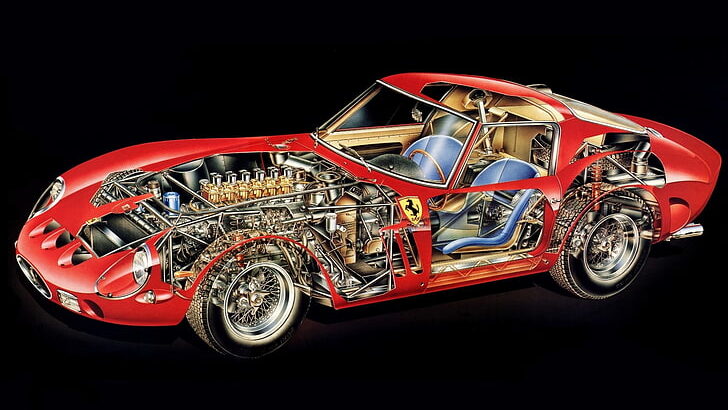
Ferrari dominated the racing scene in the 1950s and 60s, winning countless Grand Prix races and 24 Hours of Le Mans trophies. The mighty 250 series cars, culminating in the unbeatable 250 GTO, cemented Ferrari’s racing pedigree.
On the public roads, Ferrari gained fame through quick and gorgeous berlinettas like the 1960 250 GT 2+2. The “prancing horse” logo became synonymous with blistering performance and voluptuous bodywork.
The 1970s and 80s saw Ferrari battling Ford, Porsche, and Renault in endurance racing. While struggling at times in Formula 1, Ferrari managed to claim multiple driver’s championships including with the great Niki Lauda behind the wheel.
Ferrari evolved from elegant grand touring cars to aggressive mid-engine designs. The raw, uncompromising 308 and Testarossa V8s captured the era’s ethos while setting new benchmarks for performance.
Ferrari Past
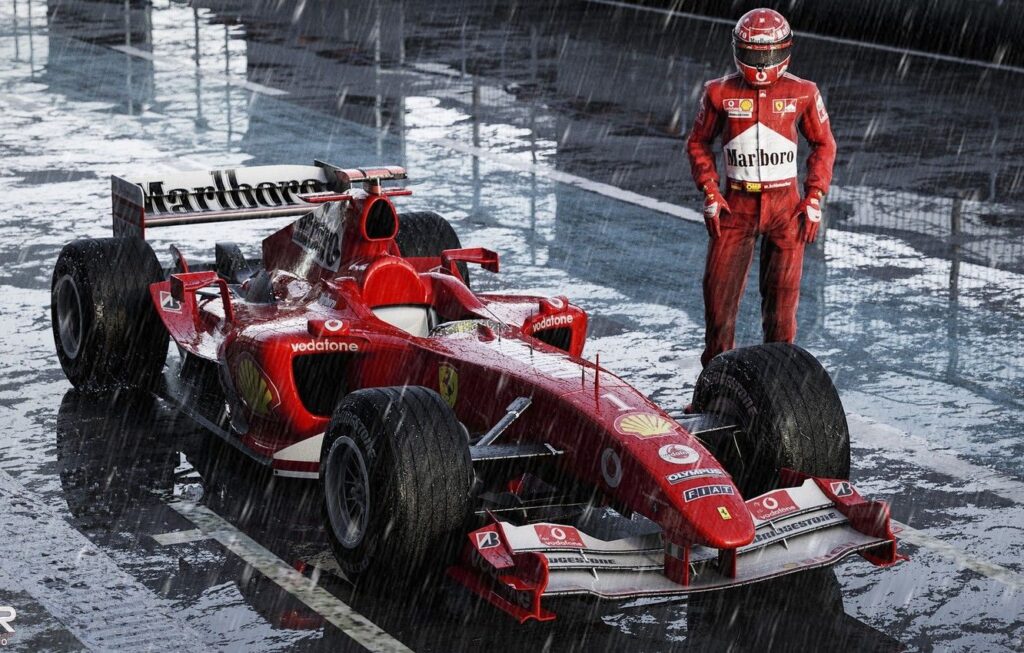
In the late 1990s and 2000s, Ferrari’s Formula 1 team, Scuderia Ferrari, utterly dominated F1 to the delight of the Tifosi fans. Michael Schumacher collected five straight driver’s championships from 2000-2004, helping Ferrari secure six consecutive constructor’s titles. F1 cars from this period like the F2004 were sculpted works of art and engineering prowess.
On the streets, Ferrari flexed its muscles through purpose-built speed machines like the Enzo, Ferrari’s cutting-edge tribute to its founder. The Enzo’s space-age carbon fiber body, 660 hp V12, and F1 technologies embodied the pinnacle of Ferrari’s capabilities (at that time).
Present of Ferrari
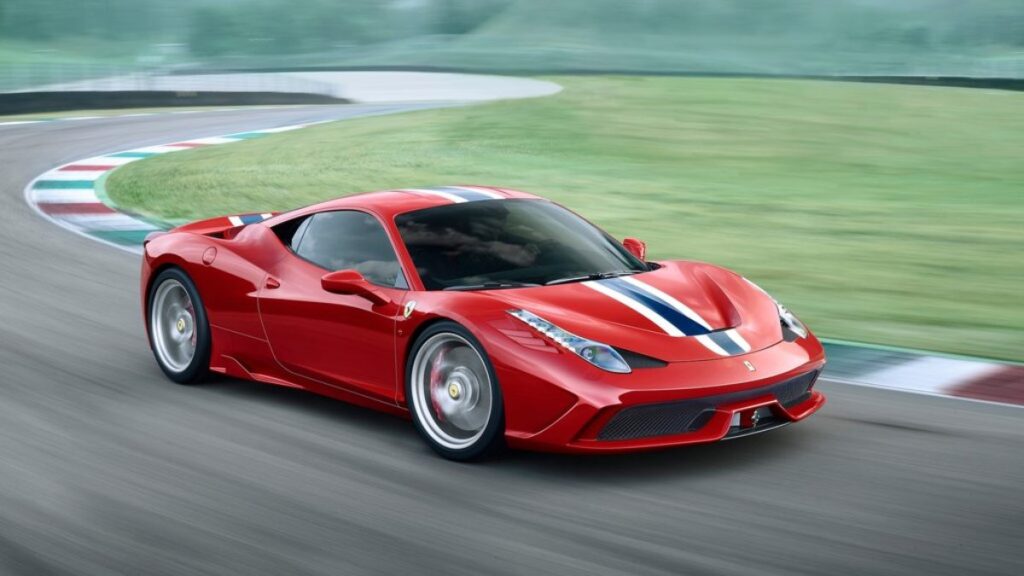
The 2010s saw Ferrari continue pursuing engineering excellence and racetrack glory. The LaFerrari hypercar introduced hybrid powertrains to Ferrari’s road cars. And the vicious 458 Speciale and F12tdf special editions delivered pure, unadulterated driving thrills.
Meanwhile, in F1, Ferrari battled fiercely against chief rival Mercedes, at times outpacing them with screaming V8 and turbo V6 racecars. Phenomenal drivers like Fernando Alonso and Sebastian Vettel carried the prancing horse banner at circuits worldwide.
On the company side, Ferrari expanded its branding and licensing initiatives to capitalize on its illustrious heritage. Ferrari World theme parks opened in Abu Dhabi and Spain, featuring thrill rides, driving experiences, and interactive exhibits.
As of 2022, Ferrari’s current road car line-up consists of the Portofino convertible, Roma coupe, SF90 Stradale hybrid, 296 GTB mid-engine V6, 812 Superfast front-engine V12, and the new 296 GTS convertible. This portfolio demonstrates Ferrari’s commitment to offering scintillating performance through cutting-edge powertrains and seductive styling.
Ferrari also recently launched the spectacular Daytona SP3, recalling its 1967 24 Hour of Daytona victory, and the ferocious 812 Competizione honoring its racing GT cars. Meanwhile in Formula 1, Ferrari continues its proud legacy as the most successful and beloved team on the grid.
Future of Ferrari
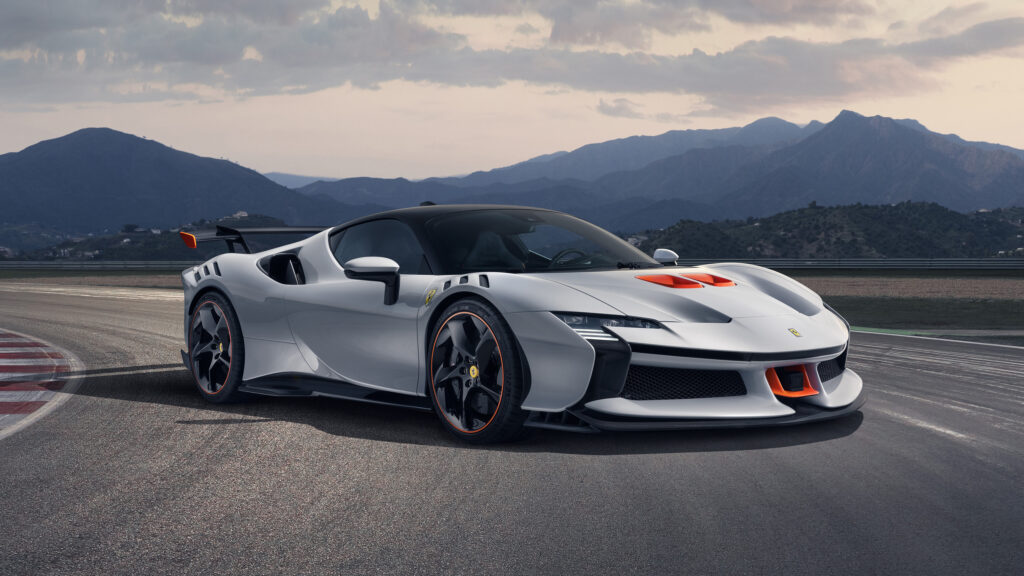
Ferrari’s future seems bright as the company expands its lineup and customer base while upholding its racing pedigree. More hybrids are planned following the SF90 Stradale to enhance performance and meet emissions standards. Ferrari also revealed the jaw-dropping Purosangue SUV (personally i dont like it ), set to be the fastest and most exclusive SUV ever (but urus is better).
Some predict Ferrari may eventually have to embrace fully-electric vehicles and autonomous driving like other supercar companies. But Ferrari will likely incorporate these technologies on its own terms, placing driving pleasure first.
While Ferrari’s roadmap includes many exciting developments, its core passions remain unchanged – to build scintillating cars and conquer racetracks worldwide. From Enzo to today’s Chairman John Elkann, Ferrari leadership safeguards this heritage.
As the world evolves, expect the prancing horse to continue prancing ever forward, proudly thrusting Italian engineering prowess into the future. Ferrari’s essence of beauty, performance, and racing immortality cannot be extinguished. Like a prized Barolo wine, Ferrari only improves with age.
Lamborgini vs Ferrari

The world of supercars is full of iconic names, but few can match the status of Ferrari and Lamborghini. These two brands have been engaged in a fierce competition for decades, with each pushing the other to new heights of innovation and style. But how did this rivalry begin, and what does it mean for the future of supercars?
The story starts in 1963, when Ferruccio Lamborghini, a successful tractor manufacturer, bought a Ferrari 250 GT. However, Lamborghini was not entirely satisfied with the car and decided to voice his concerns to Enzo Ferrari, the founder of the legendary brand. Unfortunately, Ferrari was not interested in hearing feedback from a tractor maker and arrogantly dismissed Lamborghini’s complaints. This insult was the spark that ignited Lamborghini’s passion for creating his own sports car company.
Lamborghini quickly assembled a team of talented engineers and designers, many of whom had previously worked for Ferrari. In just four months, they unveiled the Lamborghini 350 GT at the Turin Motor Show, which received positive reviews and attracted 13 buyers immediately. The Lamborghini brand had arrived on the supercar scene, and it soon began to challenge Ferrari’s dominance with more innovative and outrageous models.
The Miura, launched in 1966, was the first mid-engine V12 supercar and stunned the world with its beauty and speed. The Countach, introduced in 1974, was a futuristic masterpiece with its sharp angles and scissor doors. These cars pushed Ferrari to raise its standards and respond with its own masterpieces, such as the Daytona and the Testarossa.
Both brands faced challenges in the 1980s and 1990s due to financial troubles and changing market demands. However, they adapted and evolved, and in the 2000s, they entered a new era of excellence, showcasing their technical wizardry and artistic flair. The Lamborghini Aventador and the Ferrari 488 are two examples of their 21st-century achievements, both boasting incredible power and style.
Looking to the future, both brands promise to deliver more extreme and exciting offerings. Ferrari is working on its first SUV, the Purosangue, which aims to combine luxury and performance. Meanwhile, Lamborghini is experimenting with hybrid technology, as seen in its Sian model, which features a supercapacitor instead of a battery. The competition between these two brands shows no signs of slowing down, and fans of both are eagerly anticipating what they will bring to the table next.
For die-hard fans, Ferrari remains the ultimate object of passion and desire. But for open-minded enthusiasts, Lamborghini is also a worthy contender and a source of admiration. As the saying goes, “You can love the raging bull or the prancing horse, but you must respect them both.”
The Burden of Owning an Icon
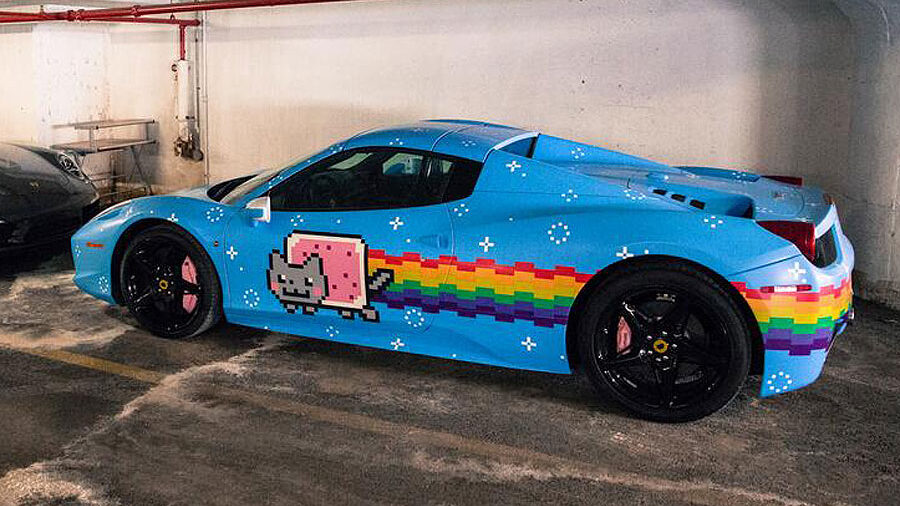
Owning a Ferrari comes with many restrictions that owners must follow. Ferrari is very protective of their brand image and imposes limitations on what owners can do to their cars. For example, owners are prohibited from making any major modifications or alterations to the car’s design or performance without Ferrari’s approval. This means no changing the color scheme, adding body kits, lowering suspension, or tuning the engine beyond factory specs. Ferrari also heavily regulates who can service their vehicles and the parts used must be genuine Ferrari components. Owners are required to have their Ferraris serviced at authorized Ferrari dealers according to a strict maintenance schedule. The required servicing and genuine parts often come at a very high cost for owners.
Every ferrari model
| Decade | Models |
|---|---|
| 1940s-1950s: The Early Years | 1947 – 125 S: The very first Ferrari, a small and nimble sports car that proved Enzo Ferrari’s vision for racing excellence. 1948-1950 – 166 Inter: An evolution of the 125 S, offering more comfort and power for both road and track. 1948-1952 – 166 Spyder Corsa: The racing variant of the 166, claiming Ferrari’s first major victory at the Mille Miglia in 1949. 1950-1952 – 340 America: A more luxurious and powerful grand tourer based on the 166, targeting the American market. 1950-1966 – America Series: A lineage of V12 grand tourers encompassing various models like the 375 America, 410 Superamerica, and 400 Superamerica, known for their elegance and performance. 1952-1964 – 250 Series: Perhaps the most iconic Ferrari era, featuring a diverse range of sports cars like the 250 GTO, Berlinetta Tour de France, and California Spyder, renowned for their timeless design and racing prowess. 1953 – 250 Europa: A more accessible and affordable entry point into the Ferrari world, offering V6 power and sleek styling. 1957 – 250 GT California Spyder SWB: A stunning convertible variant of the 250 GT, combining open-air exhilaration with Ferrari’s signature performance and elegance. |
| 1960s: Racing Domination | 1960: 250 GT SWB Berlinetta – Elegance, performance, racing legend. 1964-1968: 275 Series – Stunning design, iconic GTB, powerful V12 evolution. 1966-1968: 330 Series – Luxurious grand touring, GTC comfort, GTS freedom. 1966-1973: 365 Series – California’s retractable roof, Daytona’s timeless muscle. |
| 1970s: Berlinetta Boxer and Mid-Engine Transition | 1972-1974 – Dino 246 GT & GTS: Stylish & affordable mid-engine entry point, loved for its sleek design & V6 punch. 1973-1984 – Berlinetta Boxer Series: Powerful & futuristic mid-engine flagship, 512 BB leading the pack. 1975-1985 – 208/308 Series: Practical & accessible V8 successor to Dino, 308 GTB a true classic. 1976 – 365 GT4 BB: More affordable mid-engine alternative, offering sporty performance & Pininfarina flair. |
| 1980s: Testarossa and F40 | 1984-1991 – Testarossa: Brutally powerful, side strakes that scream “iconic,” a pop culture legend. 1984-1985 – 288 GTO: Homologation special paving the way for F40, raw performance in a stunning wedge of steel. 1987-1992 – F40: Ultimate analog supercar, raw and unadulterated driving experience, the spirit of Ferrari distilled. 1989-1994 – 348: Evolution of the 308 with increased power and refinement, smoother lines but still packing a punch. |
| 1990s: 512TR to 550 Maranello | 1992-2003 – 456: Luxurious and powerful grand tourer, front-engine V12 elegance mixed with modern performance. 1994-1999 – F355: Refined and agile successor to the F40, mid-engine excitement with smoother edges and sharper handling. 1996-2001 – 550 Maranello: Classic V12 design with modern muscle, a return to Ferrari’s roots with breathtaking performance. |
| 2000s: 360, Enzo, 599, California | 1999-2004 – 360 Modena: Balanced and beautiful successor to the F355, redefined mid-engine driving pleasure. 2002-2004 – Enzo: Hypercar masterpiece celebrating Enzo Ferrari, cutting-edge tech packed in a breathtaking silhouette. 2005-2009 – F430: More powerful and refined evolution of the 360, sharper handling and exhilarating performance. 2006-2012 – 599 GTB Fiorano: Track-focused beast with a powerful V12 heart, Fiorano name hinting at its racing pedigree. 2008-2014 – California: Retractable hardtop for a new generation, blending open-air freedom with classic Ferrari style. |
| 2010s: 458 to F8 Tributo | 2009-2015 – 458 Italia: Stunning design, exhilarating performance, redefined what a mid-engine Ferrari could be. 2013-2016 – LaFerrari: Hybrid hypercar masterpiece, pinnacle of technology and performance, a true collector’s dream. 2015-2019 – 488 GTB: More powerful and aggressive evolution of the 458, sharper lines and even more thrilling to drive. 2017-2023 – 812 Superfast: Powerful and luxurious grand tourer, V12 symphony wrapped in elegance, a modern take on classic Ferrari. 2019-2023 – F8 Tributo: Evolution of the 488 with sharper design and performance, honoring Ferrari’s heritage with a modern twist. |
| 2020s: Roma, SF90 Stradale, 296 GTB | Roma: This elegant and potent V8 coupe targets a younger audience, offering a stylish entry point into the Ferrari world with thrilling performance and a modern edge. SF90 Stradale: A plug-in hybrid hypercar pushing the boundaries of performance, boasting a powerful V8 engine and electric motors for a mind-blowing combination of speed and efficiency. 296 GTB: A mid-engine V6 hybrid that combines power and efficiency in a sleek and sporty package, marking a new chapter in Ferrari’s technology and design language. |
| Limited Production and Concept Cars | 1954 – 375 MM Special Coupe: This one-off masterpiece, built for Roberto Rossellini and Ingrid Bergman, embodied Ferrari’s commitment to bespoke creations and stunning design. 1969 – P6 Concept: A futuristic wedge-shaped prototype, the P6 hinted at what future Ferraris might hold, with its angular lines and innovative layout. 1989 – Mythos Concept: This stunning mid-engine concept explored sleek aerodynamics and radical design, ultimately influencing future production models. 1995 – F50 GT Prototype: A precursor to the iconic F50 supercar, the GT Prototype tested racing technology for street applications, showcasing raw power and aggressive styling. 2005 – Ascari Concept: Combining futuristic elements with classic proportions, the Ascari Concept redefined grand touring with its powerful V12 engine and luxurious interior. 2013 – LaFerrari XX Prototype: An even more extreme version of the LaFerrari hypercar, the XX Prototype was designed for track-only performance, pushing the limits of technology and speed. |
Conclusion
In its storied, 75-year history, Ferrari has seen dizzying highs and lows, tragedy and triumph. Its road has been anything but smooth and straight.
But thanks to its racing ethos, passion for performance, and embrace of cutting-edge technology, Ferrari remains the most revered automotive brand on Earth.
The cavallino rampante charging across those timeless Ferrari flanks represents the relentless pursuit of automotive perfection. As Enzo Ferrari said, “We build cars, not just machines.”
That sentiment endures today through Ferrari’s road cars and Formula 1 machines, which push boundaries while honoring tradition. Ferrari’s past models awe us, its current lineup excites us, and its future inspires us.
The prancing horse has achieved more than anyone could’ve dreamed back in 1947. With more checkered flags on the horizon, Ferrari’s wild ride continues. Full steam ahead and tally ho!
FAQs
1. Are Ferrari cars expensive to maintain?
Yes, Ferrari cars are known for their high maintenance costs. Regular servicing, specialized repairs, and genuine parts can be quite expensive. It is essential to budget accordingly and consider these costs before purchasing a Ferrari.
2. Can Ferrari cars be used as daily drivers?
While Ferrari cars are designed for performance and may not offer the same level of practicality as everyday vehicles, some models can be used as daily drivers. However, the limited seating and storage space, as well as the sporty suspension and handling, may not be ideal for everyone’s daily commuting needs.
3. Are Ferrari cars reliable?
Ferrari cars are generally well-engineered and built with precision. However, like any high-performance vehicle, they can experience mechanical issues. Regular maintenance and prompt repairs by skilled technicians are crucial to ensure reliability and preserve the car’s performance.
4. Do Ferrari cars hold their value well?
Ferrari cars tend to hold their value relatively well compared to other luxury cars. However, factors such as model rarity, market demand, condition, and maintenance history can influence the resale value. It’s important to consider these factors when purchasing a Ferrari for long-term investment purposes.